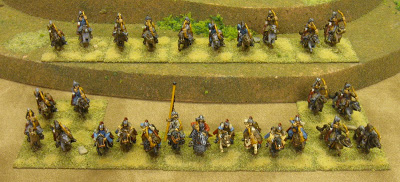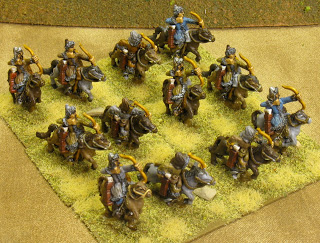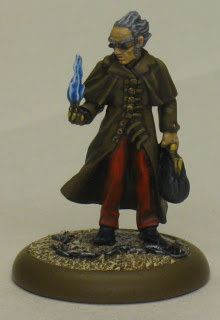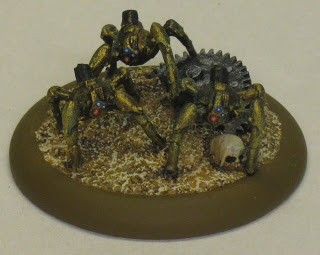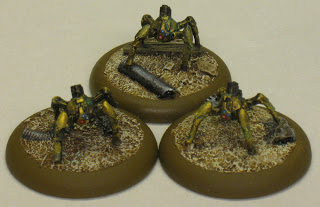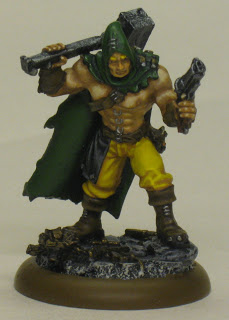Rome at War is a series of tactical wargames produced by Avalanche Press. They’re set in the Ancient period, and provide scenarios for many battles betwen Rome and her enemies. I picked up Rome at War: Queen of the Celts on discount online a few months back, and finally had a chance to try it with Frank on Saturday.
Queen of the Celts provides materials and scenarios for Rome’s battles against the Britons. The game is available with two different versions of box art. The version sold in stores uses a family friendly image of a sword and shield. If you order online you could also choose the “pinup edition,” depicting a topless Boudica rolling into battle on her chariot. I expect the reason mine was on discount is that they didn’t sell too many copies of this box.
The Avalanche Press website has a useful document on learning to play Rome at War in 5 minutes. It takes more than 5 minutes to read, but both this guide and the rulebook are fairly clear, and the rules aren’t complicated. The game should play in the advertised 60-90 minutes once you’re familiar with the rules.
Most of the mechanics are not out of the ordinary. It uses an area map with cardboard chits representing troops and leaders. In combat, each side rolls a number of dice equal to their (modified) strength, and 6’s are counted as hits (step losses) on the enemy.
I enjoyed the command system. It provides some random ability to control your troops, but it’s not as limiting as the systems used in Command and Colors, DBA, or Warmaster. The C-in-C has a control radius to control other leaders, and those leaders have a control radius to control troops in their formation. Out of command leaders have to roll when activated to see if they control their troops, and out of control troops have limited movement capabilities.
Formation activation is also variable: each player can activate a random number of formations per turn until all formations have been activated, or until each side fails to activate any formations. Usually all your formations will have an action each round, but you have to decide which ones are most important, and which ones are most important to happen first.
However, some aspects of the game are a bit weird, or don’t work as well as I would have liked.
The map boards in this game have mostly square areas on them. I say “mostly” square because they’re divided by randomly wavy lines that divide the board into roughly, but not exactly, square areas. And, the game uses “long units” to represent larger units such as Roman legions and auxilia, and large groups of “barbarians” (the winners write history again, of course). These are rectangular chits that aren’t allowed to stack with anyone except a leader.
The odd rules come out of the combination of the rectangular chits and oddly shaped board areas. Long units have a front facing, which determines which areas are to their front, flank, and rear, and you have to place the chit on the board so it’s facing in the right direction. However, the chit must also actually physically fit in the area where you’re placing it, without overlapping the sides.
The net effect is that some of the areas in this seemingly empty field can’t actually fit a long unit in one direction or the other (or sometimes both). I’ve seen some boards from other Rome at War games that have more terrain, and I can see how the rules can be used to good effect: linear hills, cliffs, and other obstacles can striate the areas and provide clearly defensible positions that make sense as long unit placements. But on this game’s wide open plains, the rules just feel like arbitrary punishment for standing in the wrong spot.
Another minor gripe I had was about combat. On your turn, each of your units can assault one adjacent enemy (but it’s not required). When one unit is fighting against three, the fight is one-on-one in one player’s turn, but three-on-one in the other player’s turn. The effect of this rule is to encourage the player to try to use historically impossible maneuvering techniques to slide around the end of an enemy’s line in order to temporarily outnumber them for one turn.
The movement rules prevent blatant abuse such as a legion flanking another legion in front contact, while allowing more historical tactics such as flanking by light infantry or allowing cavalry and chariots all the way around to the rear of an end unit. But in some cases it felt like the best tactic would have been to shuffle the line sideways each turn to gain an overlap on one end while not suffering on the other (until next turn, at least).
The other aspect that didn’t feel right were the victory points. These vary by scenario, so it’s possible other scenarios would work better, but we had to track victory points for every step loss taken by every unit on the board, as well as remembering to reduce VP if a unit recovered steps. It felt like a lot of bookkeeping, maybe there’s an easier way?
I’m generally not as concerned about the quality of game components in wargames like these, as long as the game is worth playing and the components don’t get in the way. Queen of the Celts comes with two counter sheets, but most of the counters are different strengths of only a few units. Combined with limited ability to stack counters, this means the board is definitely not counter-heavy. The counter art is very high quality, with printed images of actual units of guys on them. I’m quite happy with the counters.
There are three maps, printed in full color on glossy but thin paper. They’re big enough, and I don’t mind the thin paper so much, but the quality of the graphics on these is pretty horrible. Terrain effects are pretty close to a “flood fill” effect in the areas that have terrain, and they don’t look realistic at all. The marsh looks like someone pulled out all their eyelashes and stuck them on a scanner, and the hills look worse than the average DBA hill, which is saying something. They’re obviously all done on the computer, by someone without any map making or drawing skills to speak of. On the scale between “usable” versus “pretty,” these maps are so far to the “usable” side that the lack of prettiness makes you not want to use them.
Overall, I’d say that Rome at War is definitely worth playing again a few times, and compared to watching a movie I’ve already gotten my dollars per hour out of it. However, I don’t expect I’ll be buying any more games in the series, and I don’t think I’ll be playing this in a year’s time. I definitely prefer Command and Colors: Ancients, even though I can’t win that game to save my life. Rome at War: Queen of the Celts gets a 6 out of 10 on my boardgamegeek.com rating.
 The surface of these figures is glossier than I prefer. This time I used a few base coats of semi-gloss varnish before topcoating with Dullcote. I probably should’ve waited longer before the dullcote layer.
The surface of these figures is glossier than I prefer. This time I used a few base coats of semi-gloss varnish before topcoating with Dullcote. I probably should’ve waited longer before the dullcote layer.